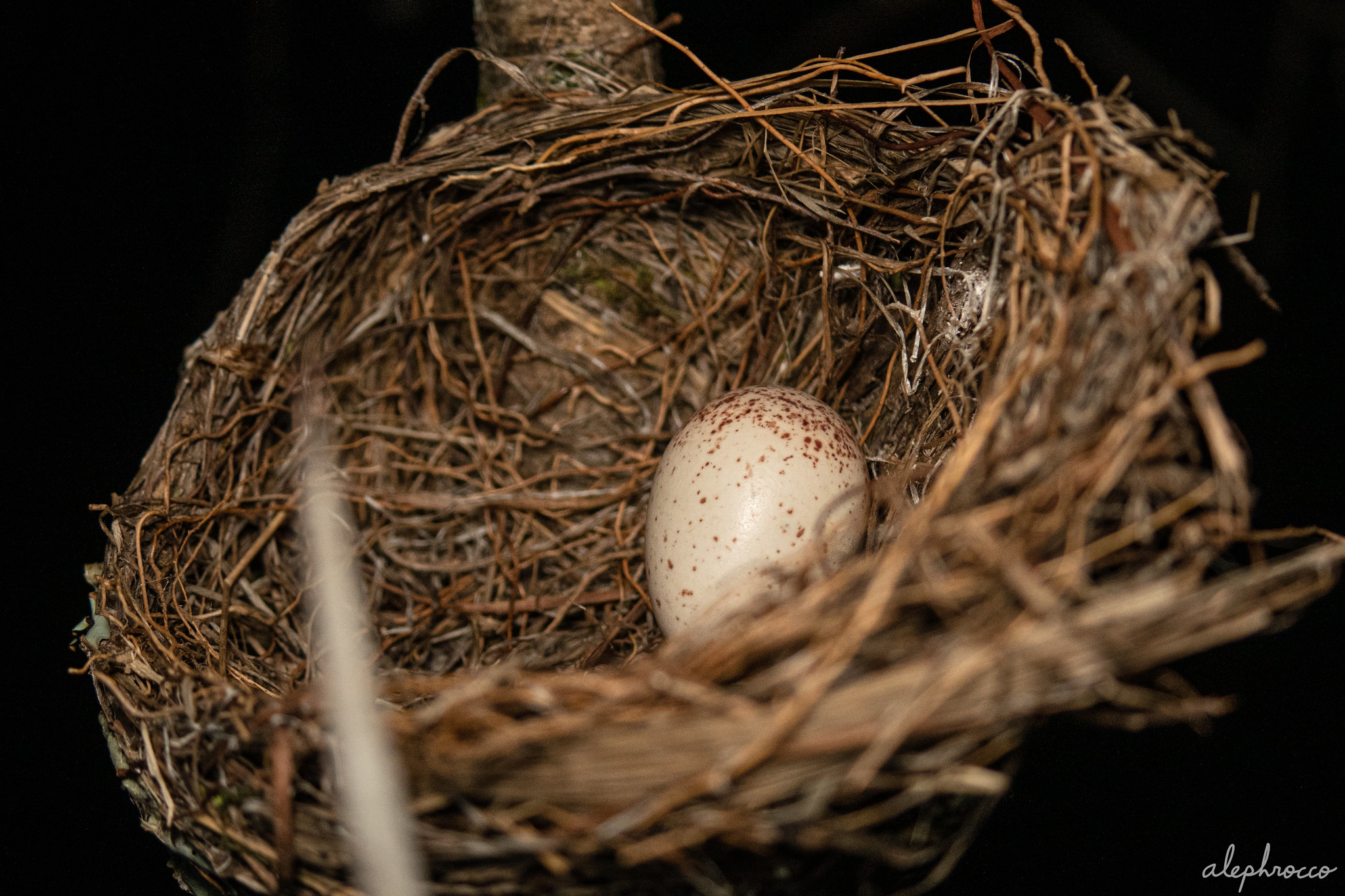
A male paradise flycatcher (Terpsiphone viridis) courts a female by fanning out his white tail and flamboyantly flailing his two tail streamers from side to side. This bird species is among the iconic in sub-Saharan Africa. Males have two color forms, brown and white, the latter which is generally the most sought after. Paradise flycatchers are able to change between color forms, and we were lucky to have a fleeting moment with a mosaic-patterned individual. In my early morning walks, I could reliably spot their wavy streaks of white tails fluttering behind the dense acacias. The flycatchers’ shy demeanor and preference for shaded perches made them especially difficult to observe and photograph.
A few months later while I was walking around at night, I noticed a small lichenous ball at the edge of an acacia tree. Upon closer inspection, a female paradise flycatcher lay firmly atop, stunned by my head torch. I was delighted to come across the hand-sized cryptic nest of this species and quickly retreated so the flycatcher wouldn’t be stressed and fly away. The following day I saw that only a single red-speckled egg was deposited inside, and over the next several weeks both the male and female took turns guarding and incubating their developing offspring. Unfortunately, offspring recruitment was exceedingly low this year for many birds at Mpala, in part because of the late rainy season. After a few weeks the lone egg was gone, probably due to either predation or abandonment.
Lichenous nests are characteristic of paradise flycatcher nests. Even in nests surrounded by vegetation devoid of lichen, parents will still select flakes of lichen and strands of white spider silk to integrate them during nest construction. As opposed to simply matching nest appearance to the surrounding environment, studies suggest that the lichen’s bright reflective surface might prevent nest predators from perceiving the object as a nest. Much like strongly contrasting demarcations on an animal’s body may disrupt its body outline, bright flakes might function to obscure the nest’s figure.
